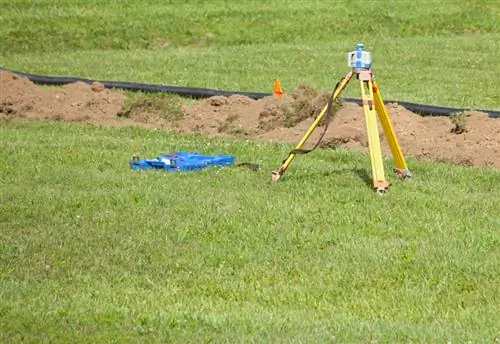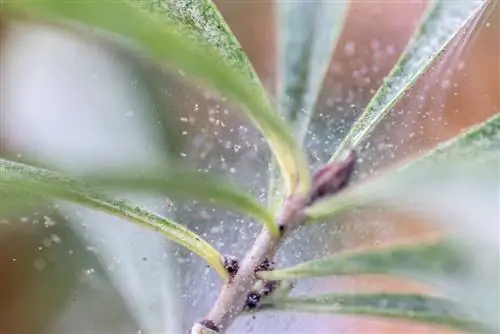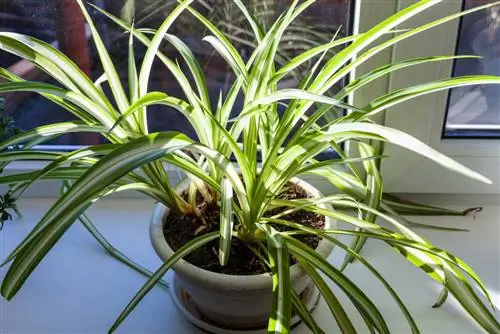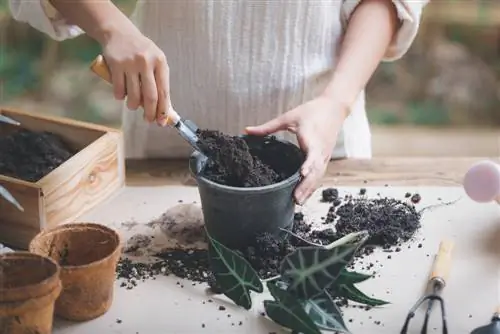- Author admin [email protected].
- Public 2023-12-16 16:46.
- Last modified 2025-01-23 11:22.
The majority of houseplants cannot tolerate waterlogging. Even small mistakes in choosing the substrate or a suitable container cause root rot, which causes the plant to die. However, if you know what's important, you can avoid the crucial care mistakes and enjoy your houseplants for a long time.
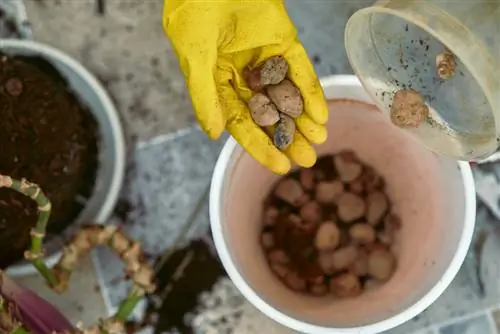
How can you prevent waterlogging of houseplants?
To avoid waterlogging of houseplants, place a drainage layer of gravel, sand, expanded clay or granules in the pot, use permeable substrate such as coconut soil, and only water when the top layer of substrate has dried. Clay pots are more advantageous than plastic pots.
How does waterlogging harm houseplants?
Waterlogging doesn't just happen when you overwater a plant. If the irrigation water cannot drain away, the substrate is permanently moist and prevents the plant from absorbing oxygen and minerals. The roots literally suffocate in the wet earth.
Recognizing symptoms
It is not always easy for a layperson to correctly interpret the symptoms of their houseplants. Most gardeners are wrong, especially when it comes to waterlogging. Because the signs of root rot are similar to those of dryness. Wilted or discolored leaves also appear if you overwater. Many interpret this as a sign of increased water requirements and make the damage worse by adding additional water.
Avoid waterlogging
You can prevent waterlogging with the following measures:
Create a drainage
Thanks to drainage, the water flows away more easily and does not collect at the bottom of the pot. We recommend a layer of gravel, sand, expanded clay or granules that you work into the pot before planting. It is very important that your bucket has a hole in the bottom from which excess water can drain out. Don't just pay attention to the pot alone, but don't forget to regularly pour out any standing water from the saucer. The drainage is laid as the lowest substrate layer. Only then does the actual substrate follow.
The thumb test
When doing the thumb test, press the tip of your thumb a few centimeters deep into the soil. Does the substrate still feel wet? Then the plant does not need to be watered again. You only have to water the next time when the top layer of substrate has dried.
Choose a suitable substrate
So that the irrigation water does not accumulate, the soil should be permeable. Coconut soil is highly recommended because it stores liquid but still allows it to seep away. You should occasionally loosen up conventional potting soil with a small rake or wooden stick.
Tip
Be careful, the plant pot is also crucial. Plastic containers repel moisture and return it to the substrate. Clay pots are a better choice.


